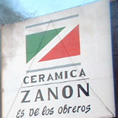




 The expropriation of Zanon is a historic victory.
The expropriation of Zanon is a historic victory.
It was just before midnight on August 12th as the result of the vote was announced: the parliament of the Argentinean province Neuquén voted 26 to 9 for a law to expropriate the ceramics factory Zanon. The buildings, machines and even the brand name “Zanon” no longer belong to the capitalist Luigi Zanon – they belong to the workers’ cooperative FaSinPat (“Fabrica Sin Patrones”, which means Factory Without Bosses).
Outside the parliament, hundreds of Zanon workers and supporters were following the session on a large screen. After the law was passed, they cheered, hugged and cried. The expropriation was the result of a struggle that has been going on for more than eight years.
In 2001, on the eve of the Argentinean economic crisis, the owner Luigi Zanon tried to close the factory and throw all 380 workers onto the street without paying them severance pay or even outstanding wages. But the workers responded by occupying the factory in October 2001. They began to sell the stock in order to get the money owed to them. When the stock ran out, on March 21, 2002 the workers’ assembly decided to begin production under workers’ control.
The Zanon workers recognized: a factory without workers doesn’t work, but a factory without bosses can work just fine.
In the eight years of workers’ control, the workers of Zanon – who renamed their factory FaSinPat – have defended themselves against eviction attempts by the state and thugs in the pay of the bosses and the trade union bureaucracy. They forged links with other occupied factories, the unemployed workers’ movement, human rights organizations (like the Madres de Plaza de Mayo), trade unions, left-wing parties and the local indigenous people of the Mapuche. Several times they were able to organize general strikes in Neuquén in defense of the occupation.
However, the expropriation of the factory is only a partial solution for the Zanon workers: They demand full nationalization under workers’ control, in order to put Zanon at full capacity and at the service of the community, with no compensation for the former owners and their creditors. They recognize that their project can only be successful if the entire economy, at a national and international level, is put under workers’ control and exploitation ended.
The contrast between capitalist production and workers’ control has been amazing: Whereas Mr. Zanon claimed he had to cut wages and fire hundreds of workers, the workers themselves – not completely subject to the laws of the capitalist market – have been able to pay everyone a living wage (and an equal wage), almost double the number of jobs (from 260 at the start of the occupation to 470 today) and provide ceramics products for the community (for schools, hospitals etc.).
The struggle of the Zanon workers is an example for workers around the world who are faced with mass layoffs and factory closures in the course of the crisis. There have been dozens of factory occupations around the world over the last year, but most have been limited to demanding higher severance packages, which offer no long-term prospects for workers faced with unemployment. Every factory that is threatened with closure needs to be occupied and run by the workers. Nationalization under workers’ control is not just possible: It is the only way to save jobs and livelihoods.
FaSinPat, even if it is a very limited example, shows that a factory without capitalists can be sucessful. It shows that an economic system run by the workers to meet the needs of their class is possible.
It must be clear that the experience at Zanon was not simply a product of the dynamic of the struggle and the spontaneous militancy of the workers. The revolutionary left in Argentina, principally the Trotskyist party PTS, played a leading role in the entire process. As Raul Godoy, a leader of the occupation and a member of the PTS, explains: “It was necessary that in every assembly and even in every conversation we argued and fought for a revolutionary strategy. At the beginning the workers didn’t understand this – they even rejected it explicitly – but in the heat of the crisis and the struggle this strategy was accepted fully.” For implementing a strategy of workers’ control, it is necessary for a revolutionary Marxist organization to be present amongst the workers.
- Support the struggle of the Zanon workers for full nationalization under workers’ control!
- Every factory threatened with closure needs to be occupied and run by the workers!
REVOLUTION International Coordination, August 22, 2009
We will be publishing an interview with Raul Godoy, a leader of the Zanon workers and the Trotskyist party PTS, soon.
2 Responses to “Zanon belongs to the workers!”
Leave a Reply

August 26th, 2009 at 08:30
ZANON is a victory for all workers of the world!
but we need a national and international extension of workers control.
therefor we need trotskyist partys all over the world, as sections of a rebuild marxist workers international!
with solidarity greetings,
systemcrash
http://systemcrash.wordpress.com
(plattform für marxistische konvergenz)
(platform for marxist convergence)
September 9th, 2009 at 08:32
This statement was mirrored here:
http://www.permanentrevolution.net/entry/2805